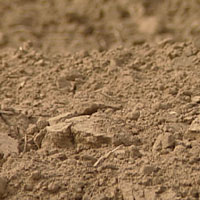Join us for conversations that inspire, recognize, and encourage innovation and best practices in the education profession.
Available on Apple Podcasts, Spotify, Google Podcasts, and more.

Soil from Lincoln, MA
During this session, you will have an opportunity to build understandings to help you:
Dirt… earth… soil… it forms where Earth’s rocky crust meets the atmosphere. Although it is common to everyday experience, people are often surprised at the complex nature of soil. In this session, participants will explore the processes of soil formation by examining how soil appears on a newly formed, barren volcanic island.
What is soil? How does it form? To answer these questions, this video takes us on a journey that begins at a farm and ends on the “big island” of Hawaii. During our journey, we visit with soil scientists Dr. Elissa Levine, Dr. Andy Kurtz, and Dr. Oliver Chadwick to learn more about that important substance under our feet.
Dr. Levine describes the nature of soil, which leads to a consideration of the physical and chemical processes involved in soil formation. Dr. Kurtz and Dr. Chadwick, who conduct research on soil development in the volcanic islands of Hawaii, examine the place of soil in Earth’s structure. Next, we visit Tim Mackey and his fifth graders in Lancaster, Pennsylvania, and watch as they generate ideas about the thickness of the soil layer and what lies beneath it.
Throughout the video, we watch elementary school children being interviewed as they reveal their ideas about soil. The children’s ideas represent starting points that lead us to consider the complexity of soil, which can be observed in soil horizons, and the role of soil in Earth’s processes. Finally, we check back with Tim Mackey’s students as they analyze the components of different soil samples and try to determine the types of environments from which the soil was collected.